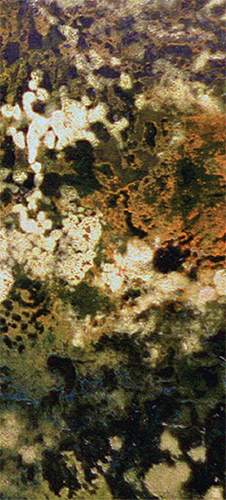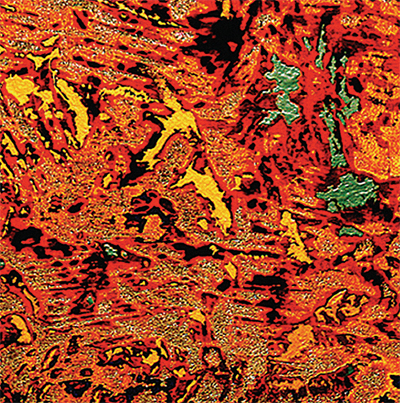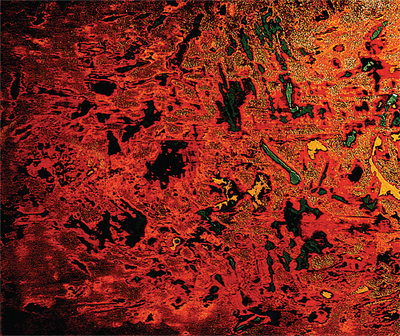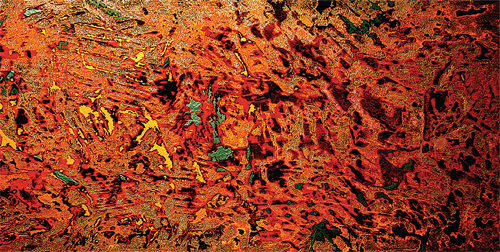Anger is a natural human emotion; it lasts only 15 seconds. So said the grief expert Elizabeth Kübler-Ross in an interview I once read. Unfortunately, when the human ego is involved, anger tends to last far longer. One of the most famous examples is the “wrath of Achilles,” the mega-anger that begins Homer’s Iliad and remains a theme throughout the epic. A recent translation calls Achilles’ anger “sustained rage.” It’s the sustained part that’s the problem. But shouldn’t we also avoid, or control, or suppress even the natural, 15-second variety? It all depends. Aristotle tells us that “he who cannot be angry when he should, at whom he should, and how much he should, is a dolt.” This suggests that in certain circumstances, anger is appropriate, justifiable—even necessary. But before we look at what those circumstances might be, it would be good to consider how our cultural and psychological prohibitions against anger can cause us to misuse the ninth precept.

Working with any of the precepts is not about engaging the super ego. The Zen precepts are moral principles in a sense, but they aren’t “out there,” separate from us, to be held up as standards with which to criticize ourselves when we fall short or, even worse, to criticize others when they fall short. Nor are the precepts moral straitjackets for controlling our own behavior or anyone else’s. Instead, they express what the realized person does naturally. As Bodhidharma puts it, “Self-nature is inconceivably wondrous. In the dharma of no self, not postulating self is called the Precept of Refraining from Anger.” Self with a capital S, the Self of Self-nature, is in reality “no self”— Buddhanature, the realm of no separation. But until we reach that stage of realization (if there is such a thing as reaching it once and for all), how do we work with the ninth precept? As with all the precepts, we need to work with it in a way that liberates rather than confines us. And that means not using the precept to reject any part of ourselves. Because anger is so universal, frequent, and varied, it serves as a particularly useful model for this.
First of all, it’s important to move beyond an oversimplified picture of what anger is. Anger takes many forms, and it’s good to explore its subtle and not-so-subtle variations so that ultimately each of us can find out precisely what works for us as a practice. Think of all the words there are for anger: nouns like rage, outrage, wrath, fury, resentment, annoyance, irritation, displeasure, indignation; modifiers like ticked off, pissed off, boiling mad, stewing, annoyed, simmering; verbs like blow up, snap at, hit the ceiling, see red, get under someone’s skin, lose it. In addition to all the different kinds of anger are all the different things we do with anger. Some of us suppress it, some of us act it out, some of us disguise it as something else. Some of us get very angry, even at ourselves, and some of us haven’t the vaguest idea that we are ever angry. Some of us even get angry at things. How could one get angry at things, you may wonder. Well, try the computer. Some of us get angry at computers and other objects much more often than we get angry at people. I once had a boyfriend who during a particularly difficult week became so angry on discovering that money had fallen out of his back pocket that he ripped the pocket right off his pants—while he was wearing them! I’ll never forget how angry he was. Actually, “enraged” is a better word for his state.
Because we imagine anger is never a good thing, it is easy to think we should practice simply not being angry. But that approach is too general and abstract. It’s important for each of us to be precise, to be real, to be personal and honest, to find out exactly what my anger is. To do that we need to ask ourselves lots of questions about its actual nature. [See “Practice: Working with Anger”]

The first step, then, in working with the ninth precept is to discover my own particular version of anger. Once I’ve seen the quality of my anger, the next step is to get to know it intimately. Like many emotions, anger has both a cause and an object. Its cause might be that my best vase was broken through carelessness, but the object of my anger is you, the one who broke it. Getting to know my anger means turning my attention away from its cause and its object, and all my stories about it, to the anger itself. Getting to know my anger means not having any judgments about it, compassionately allowing it, and being curious about it. Suppressing anger is one obvious way of avoiding getting to know it, but so too is acting it out. In the latter case the anger is like a hot potato—I can’t get rid of it fast enough.
What makes us avoid getting to know anger itself, rather than focusing on its object? In some cases it is fear. Once, in a conversation about psychoanalysis, I asked an old friend what her analysis had been about. She thought carefully and said, “Not being afraid of my anger.” I then asked what she was afraid of. After a few moments, she replied: “Blowing up.” She wasn’t speaking metaphorically about having a burst of anger; she meant literally blowing up, in the sense of being annihilated. It was an existential fear. Another fear that can prevent us from expressing or even feeling our anger is fear of being rejected by the one with whom we’re angry. Then, too, some of us are ashamed of being angry and can’t face it or admit it. Others of us may have such a powerful self-image of not being the angry type that we deny having any anger to get to know.

Why is it important to know all this about my anger? Why not just not be angry? For one thing just not being angry is easier said than done. For another, there is no freedom in avoiding or suppressing it. Again, the precepts are about not rejecting any part of myself—in this case, the one who gets angry—but rather getting to know that part of myself and accepting it without any judgment. This is a very important step in working with any precept. The more we can truly accept who we are, all the way to the point of becoming one with it, the more we give the precept a chance to manifest naturally. Some of us need to practice not acting out our anger, and knowing when and how it shows up can be an enormous help in that regard. Others of us need to get in touch with our anger and not be so afraid or ashamed of it: here too, getting to know the anger, even welcoming it, is an enormous help, especially when we have the courage to admit to others that we’re angry. For those with a self-image of never being angry, it’s important to realize that a never-angry self-image postulates a self just as much as being angry does.
Thich Nhat Hanh has a very beautiful thing to say about getting to know our anger:
Treat your anger with the utmost respect and tenderness, for it is no other than yourself. Do not suppress it—simply be aware of it. Awareness is like the sun. When it shines on things, they are transformed. When you are aware that you are angry, your anger is transformed. If you destroy anger, you destroy the Buddha, for Buddha and Mara are of the same essence. Mindfully dealing with anger is like taking the hand of a little brother.
Perhaps the most important reason for getting to know our anger is that anger is actually a precious energy that becomes anger only when it is caught up in complex egoic patterns. As we’ve seen, those patterns include my stories about anger’s cause and object—the broken vase and the one who broke it, for example—as well as many deluded beliefs, not the least of which is the delusion of separation. This energy needs to be freed and transformed rather than distorted or destroyed. When we are unable to feel our anger, depression, collapse, loss of aliveness, dependence, and inability to be autonomous are likely to result. Years ago I was at a small party of dharma friends, and one of the hosts mentioned that he and his partner had very different ways of getting angry. Immediately, everyone was interested, and before we knew it, someone proposed that we go around the room and each say how we got angry or how we would get angry were we to really let loose. I sat there dreading the whole exercise, but when my turn came, I found myself happily announcing that I would be like Dr. Strangelove riding the bomb, ready to blow up the world! That I could even have such a destructive thought was a surprise to me, but incredibly freeing. Several years later, our small New York Zen group tried the same exercise. Given the age and rather staid nature of most of us, the images were hilarious—an ex-husband being shot in a restaurant; a huge flood drowning everyone; stabbings, suffocations, and, of course, Dr. Strangelove blowing up the world. What was fascinating was the effect this exercise had on us: our cheeks were beautifully flushed, our bodies were full of energy, and a wonderful vitality filled the room. We had released a life force simply by letting go of our shame and denial.

To deepen this practice even more, we can try, in a spirit of simple curiosity, to get so close to our anger that we no longer know or feel it as anger. Cause and object, the self being angry, and the anger itself all drop away, and all that remains is the precious energy, freed at last.
Again, we have Bodhidharma’s version of the ninth precept: “Self-nature is inconceivably wondrous. In the dharma of no self, not postulating self is called the Precept of Refraining from Anger.” What he is saying is that when there is no self, no selfterritory to defend or construct, and hence, there is oneness— no separation—then there is no anger. But what about Aristotle’s remark that an inability to be angry is actually a failing? Can we reconcile that with the Zen version? In other words, can there be anger that does not come from a postulated self, anger that is not defensive and based on the delusion of separation? The answer is yes. There is anger at a child who rushes into the street, endangering his or her life. There is anger at cruelty, and at carelessness that endangers others. My teacher once got angry at me when he realized that I had not thoroughly condemned the behavior of a fellow student who was making money by delivering drugs. These are the quick, 15-second kinds of anger. When the 15 seconds are up, it’s over. There is a kind of cleanness, clarity, and purity to this kind of anger because there is no territory of self. But there is also an anger that stays longer than 15 seconds—stays cleanly, clearly, and purely until something that needs to be remedied is taken care of. We all know stories about heroic whistle-blowers who were angry about chemicals being dumped in a river, or angry that information concerning the side effects of a drug had been withheld. We are grateful that these people persisted in their clean, pure anger. That kind of anger is not about defending the territory of self; it is for the good of all.

The kind of anger we’re used to, the kind that isn’t pure, can be a great teacher, as Bodhidharma’s version of the precept indicates. Since anger by definition involves separation, it makes no sense to imagine it arising in a universe of oneness. Thus when it does arise, it instantly reveals to us the delusive creation of “me” and “not me.” Anger shows us just how fast self can arise, especially when we least expect it. It can happen whether we react to someone or something with a flash of temper, or some ancient buried anger wakes up and slowly takes us over. In either case, the self is born again. But when the precious energy is released from the entrapment of self and our actions arise from Self-nature, it is then that we experience the oneness of self and other, and the arising of compassion. Rumi’s poem “Ali in Battle,” says it all:
Learn from Ali how to fight
without your ego participating.God’s Lion did nothing
that didn’t originate
from his deep center.Once in battle he got the best of a certain knight
and quickly drew his sword. The man,
helpless on the ground, spat
in Ali’s face. Ali dropped his sword,
relaxed, and helped the man to his feet.“Why have you spared me?
How has lightning contracted back
into its cloud? Speak, my prince,
so that my soul can begin to stir
in me like an embryo.”Ali was quiet and then finally answered,
“I am God’s Lion, not the lion of passion.
The sun is my lord. I have no longing
except for the One.
When a wind of personal reaction comes,
I do not go along with it.There are many winds full of anger,
and lust and greed. They move the rubbish
around, but the solid mountain of our true nature
stays where it’s always been.There’s nothing now
except the divine qualities.
Come through the opening into me.Your impudence was better than any reverence,
because in this moment I am you and you are me.I give you this opened heart as God gives gifts:
the poison of your spit has become
the honey of friendship.”
This is the Precept of Not Being Angry.
♦
Poem excerpted from The Essential Rumi: New Expanded Edition by Coleman Barks © 2004 by Coleman Barks. Reprinted by permission of HarperOne, an imprint of HarperCollins publishers.
EXTRA
Practice: Working with Anger
To make the practice of working with anger personal and precise, it is useful to explore the following kinds of questions. (This can be done as a solo inquiry, or with another person asking you the questions, then silently holding the space while you answer.)
First, find out on what kinds of occasions you get angry:
• When do I get angry?
• What makes me angry?
• Do I get angry when I’m criticized? Ignored? Not getting my way? Do I get angry at someone who treats others badly?
• Do I ever displace my anger onto the wrong person, or take anger at myself out on someone else?
• What happens when I get angry? Does angry language pop out of me?
Next, inquire into the flavor of your anger:
• How do I typically get angry? Is my anger hot or cold? Is it quickly discharged or a slow burn?
• Is my anger suppressed, denied, or hidden?
• Do I walk around with simmering resentments day after day?
• How is my private anger different from my anger at public figures or institutions?
If you have difficulty expressing anger or even recognizing that you’re angry, ask yourself:
• When do I have difficulty expressing anger?
• With which sorts of people am I reluctant to express anger? Family members? Friends? Men? Women? Employers? Authority figures?
Finally, ask yourself about any old angers you’ve been carrying around for a long time. (Sometimes we have to dig deep to uncover them.)